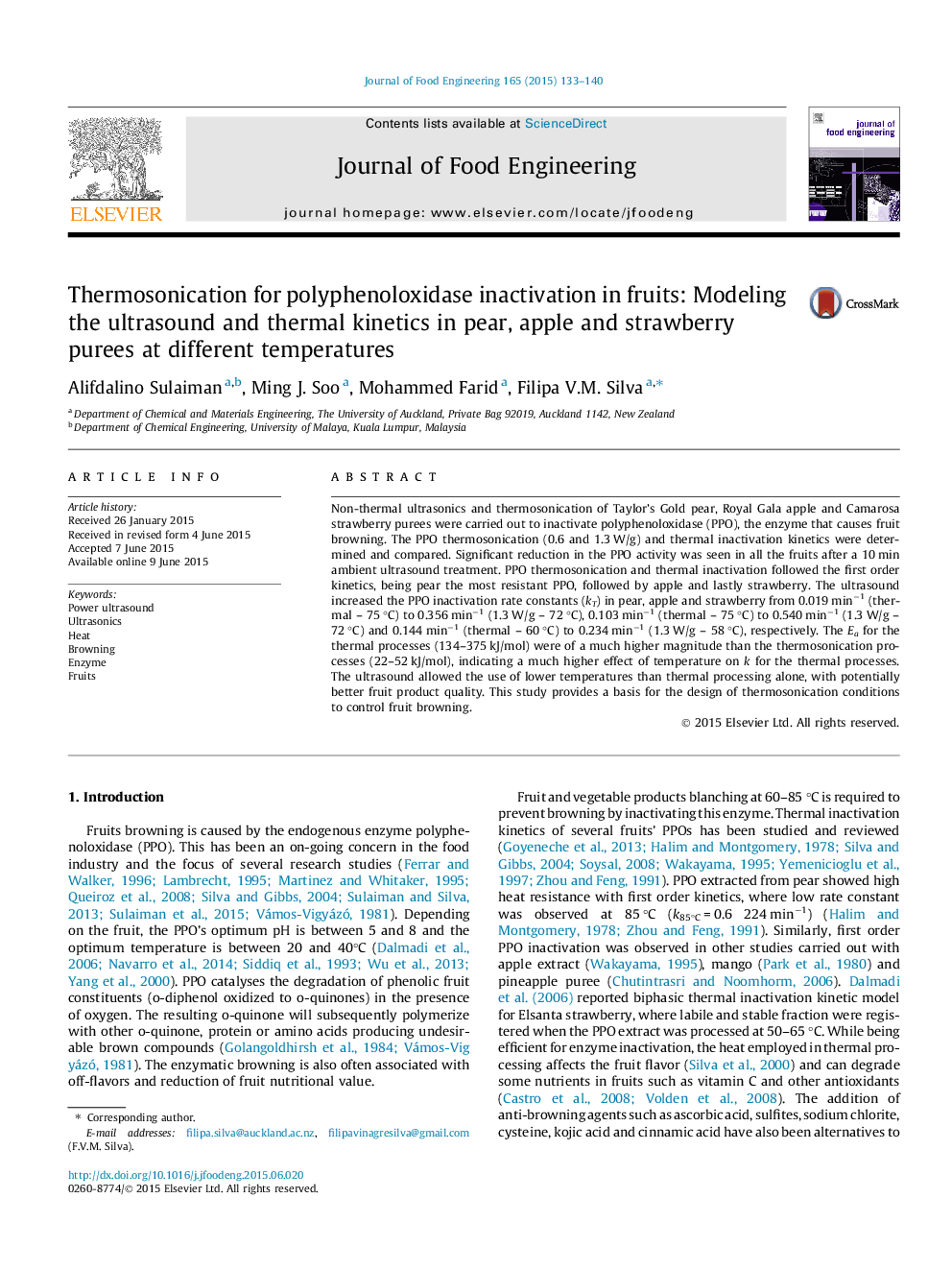| Article ID | Journal | Published Year | Pages | File Type |
|---|---|---|---|---|
| 6665292 | Journal of Food Engineering | 2015 | 8 Pages |
Abstract
Non-thermal ultrasonics and thermosonication of Taylor's Gold pear, Royal Gala apple and Camarosa strawberry purees were carried out to inactivate polyphenoloxidase (PPO), the enzyme that causes fruit browning. The PPO thermosonication (0.6 and 1.3 W/g) and thermal inactivation kinetics were determined and compared. Significant reduction in the PPO activity was seen in all the fruits after a 10 min ambient ultrasound treatment. PPO thermosonication and thermal inactivation followed the first order kinetics, being pear the most resistant PPO, followed by apple and lastly strawberry. The ultrasound increased the PPO inactivation rate constants (kT) in pear, apple and strawberry from 0.019 minâ1 (thermal - 75 °C) to 0.356 minâ1 (1.3 W/g - 72 °C), 0.103 minâ1 (thermal - 75 °C) to 0.540 minâ1 (1.3 W/g - 72 °C) and 0.144 minâ1 (thermal - 60 °C) to 0.234 minâ1 (1.3 W/g - 58 °C), respectively. The Ea for the thermal processes (134-375 kJ/mol) were of a much higher magnitude than the thermosonication processes (22-52 kJ/mol), indicating a much higher effect of temperature on k for the thermal processes. The ultrasound allowed the use of lower temperatures than thermal processing alone, with potentially better fruit product quality. This study provides a basis for the design of thermosonication conditions to control fruit browning.
Related Topics
Physical Sciences and Engineering
Chemical Engineering
Chemical Engineering (General)
Authors
Alifdalino Sulaiman, Ming J. Soo, Mohammed Farid, Filipa V.M. Silva,
